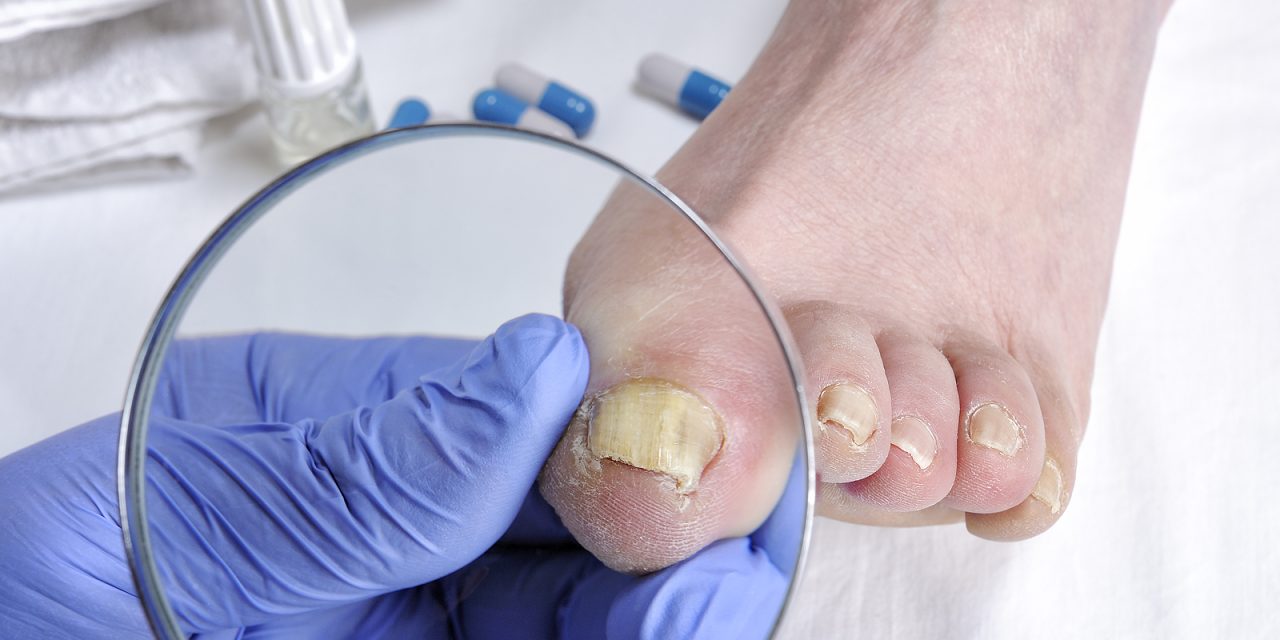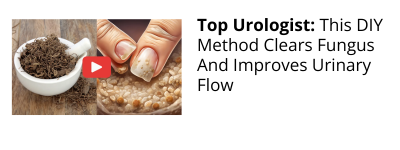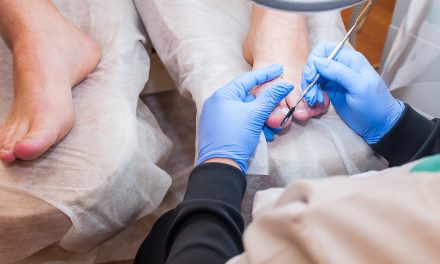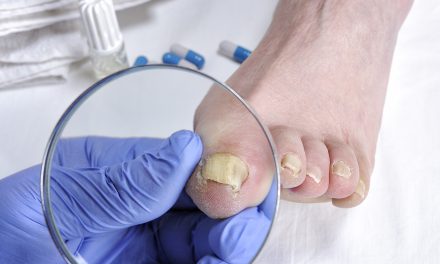Dealing with a toe fungal infection can be frustrating, but effective solutions are available.
The most straightforward way to treat a toe fungal infection is to use antifungal treatments, which can be either topical or oral.
These treatments work by targeting the fungus, helping to reduce infection and promote the growth of a healthy nail.
In mild cases, over-the-counter antifungal creams or ointments may offer relief.
Some individuals find success with home remedies, like tea tree oil or vinegar soaks.
If these solutions aren’t effective, it’s wise to consult a healthcare provider for prescribed treatments that may include stronger oral medications or specialized therapies.
In addition to treatment, maintaining good foot hygiene is important.
Wearing breathable shoes and changing socks regularly can help prevent future infections.
Those with persistent or severe cases might need to consult a specialist to explore more targeted treatments.
Key Takeaways
- Antifungal treatments are essential for treating toe fungus.
- Over-the-counter and home remedies can help mild cases.
- Good foot hygiene is key to preventing infections.
Understanding Toenail Fungus
Toenail fungus, also known as onychomycosis, affects millions of people, causing nails to become discolored and brittle. The condition is more than a cosmetic issue and can lead to pain and discomfort if not treated.
What Is Toenail Fungus?
Toenail fungus, or onychomycosis, is a common infection that impacts the nails on one’s feet. It is primarily caused by fungi called dermatophytes, though yeast and molds can also be responsible.
These microscopic organisms thrive in warm, moist environments, such as sweaty shoes or damp floors.
The infection often begins as a white or yellow spot under the tip of a toenail and can progress to cause thickening and crumbling of the nail, as well as discoloration. This condition does not usually resolve on its own and often requires medical attention to manage effectively.
Causes and Risk Factors
There are several factors that can increase the risk of developing toenail fungus.
Public areas, like swimming pools and locker rooms, are common sources of infection. Having athlete’s foot can also contribute, as it can spread fungus from the skin to the nails.
Certain health conditions, such as diabetes and psoriasis, weaken the body’s immune response, making one more vulnerable. People with a history of fungal infections should also be cautious, as recurring cases are not uncommon. Aging increases susceptibility, partly due to reduced blood flow and slower nail growth.
Symptoms and Diagnosis
The symptoms of toenail fungus are often easily recognizable. Affected nails may become thick, brittle, and distorted in shape. Discoloration commonly appears as white, yellow, or brown patches. In some cases, a foul odor can accompany the infection.
Diagnosis typically involves a clinical examination by a healthcare professional. They might take nail clippings or scrapings for laboratory testing to identify the specific type of fungus.
Differentiating this condition from other nail disorders, such as psoriasis, is important to ensure proper treatment and management. Early diagnosis can lead to more effective treatment outcomes.
Medical Treatments
Treating toe fungal infections effectively often requires a combination of medications and procedures. Patients may need prescription drugs or topical treatments, and sometimes more advanced measures are necessary. Consulting a podiatrist can help determine the best approach for individual cases.
Prescription Medications
Prescription medications are often used to combat fungal nail infections. Common oral antifungal medicines include terbinafine and itraconazole.
These work from the inside out, helping to clear the infection over several months. Terbinafine can be especially effective with a recommended treatment duration of six to twelve weeks.
Some side effects can include skin rashes or upset stomach. It’s important to follow the prescribed dosage and consult with a podiatrist if any adverse effects occur.
Topical Applications
Topical treatments are applied directly to the infected nails. Options like efinaconazole (known as Jublia), ciclopirox, and tavaborole are commonly used.
These medications can be effective for mild to moderate infections. Ciclopirox is available as a nail lacquer, which can be used daily.
Topical applications may not work as quickly as oral medications but can be a suitable option for those who cannot take oral antifungals. Regular application is crucial for success, and the treatment may last several months.
Advanced Procedures
In some cases, advanced procedures might be required. Laser treatment can target the infected nail with intense light to eliminate the fungus. Another option is nail removal, either partially or entirely, to allow for direct treatment of the nail bed.
These procedures are usually recommended when other treatments have failed. Consulting with a podiatrist is essential to determine if such options are appropriate, considering factors like the severity of the infection and patient health.
Home Remedies and Over-the-Counter Solutions
Treating toe fungal infections can involve various methods. Home remedies like tea tree oil and apple cider vinegar are popular choices, while over-the-counter products such as antifungal creams and urea ointments are widely available.
Natural Treatments
Many people turn to natural treatments as a first step in dealing with toe fungus. Tea tree oil is a common option due to its antifungal properties. Applying a few drops directly to the affected nail might help reduce the infection.
Another option is using vinegar or apple cider vinegar, which can be soaked in water to create a foot bath that may hinder fungal growth.
Snakeroot extract is less well-known but offers another potential remedy. Made from a plant in the sunflower family, this extract is applied directly to the nail.
Users should be consistent with treatments, usually over several months, to see results. While these natural options may work for some, it’s essential to test them carefully to avoid irritation or adverse effects.
Over-the-Counter Products
Over-the-counter solutions provide a convenient way to manage toe fungal infections. Antifungal creams containing ingredients such as clotrimazole are widely available and can be directly applied to the infected area. These creams work by disrupting the fungus’s growth.
Urea ointment is another product commonly used. It softens the nail, which may help other treatments penetrate more effectively.
Additionally, products like Listerine can be a household remedy, as its antiseptic properties might aid in treating infections. These solutions often require consistent application for months before seeing significant changes. Users should follow product instructions carefully to maximize effectiveness.
Prevention Strategies
Preventing toenail fungus involves proper foot care and maintaining a clean environment. Simple changes in daily habits can significantly reduce the risk of developing an infection. Ensuring that feet are dry and using appropriate footwear are key steps.
Footwear and Hygiene
Wearing the right type of footwear is essential. It is advisable to choose breathable shoes to allow airflow, reducing moisture buildup. Shoes made from synthetic materials can trap moisture and should be avoided.
Using flip-flops in public places like pools and locker rooms helps prevent direct contact with fungal spores.
Maintaining good hygiene is important. Change clean socks daily and wash them in hot water to kill fungi. Applying antifungal powder inside shoes can help keep feet dry and reduce the risk of infection.
Lifestyle and Home Environment
A healthy nail starts with a healthy lifestyle. Keep nails trimmed and clean, and avoid cutting them too short to prevent breaks where fungi can enter. It is essential to disinfect nail tools after each use.
The home environment should also support the prevention of toenail fungus. Ensure proper ventilation to reduce humidity, which can encourage fungal growth. Regularly clean and disinfect floors and shower areas to minimize the risk of spreading fungi.
When to See a Specialist
Toe fungal infections can sometimes lead to complications that require professional medical attention. Knowing when to consult a specialist can help prevent more severe conditions that might arise from untreated infections.
Recognizing Complications
If signs like redness, swelling, or a pus-filled blister appear, it’s crucial to seek medical treatment. These symptoms can indicate more serious issues, such as paronychia or an infected toe. A persistent infection that doesn’t improve with over-the-counter treatments should also be a red flag.
Complications such as cellulitis or an ingrown toenail could develop, requiring intervention by a foot specialist. Timely recognition and treatment of these issues help in controlling the spread of the infection and avoiding permanent damage.
Consultation with a Podiatrist
A podiatrist specializes in foot and nail conditions, making them an ideal choice for addressing severe fungal infections. They offer expertise in managing difficult cases, providing treatments that go beyond simple home remedies.
For individuals experiencing severe soreness or recurring infections, a consultation can offer relief. Podiatrists can prescribe stronger medications or suggest procedures to remove infected parts of the nail.
Consulting with a foot specialist ensures that the condition is assessed accurately, providing a personalized treatment plan that effectively addresses the patient’s needs.
Understanding Associated Conditions
Toe fungal infections can often be influenced by other health issues. It is important to explore how these conditions and their effects on the body interact with fungal infections. This section will delve into the impact of underlying issues like diabetes, immune system concerns, and how infections might spread to fingernails.
Impact of Other Health Issues
Certain health issues, such as diabetes and a weakened immune system, can increase the risk of fungal infections in the toes. Diabetes can cause poor circulation and nerve damage, which may slow the healing of foot wounds and make infections more likely. Those with heart or liver problems may experience compromised immune responses, making toe fungal infections harder to treat.
Chronic conditions might not directly cause fungal infections, but they do make management and treatment more complex. Proper management of these health issues is vital in reducing the risk and severity of fungal infections. Regular monitoring and maintaining good hygiene can help prevent infection complications.
Infections in Fingernails
Fungal infections often spread from the toes to the fingernails if not treated promptly. Tinea unguium, commonly known as onychomycosis, can affect both toenails and fingernails, causing discoloration, thickening, and crumbling edges. Those with psoriasis or a weakened immune system are more susceptible to this spread.
Treatment for fingernail infections may involve topical antifungal creams or oral medications. It’s crucial to address these infections early to prevent further complications. Regular hand hygiene and avoiding sharing personal grooming tools can also help. Ensuring both toenail and fingernail infections are managed together is important for effective treatment.
Long-Term Management
Managing toenail fungus requires consistent care and monitoring to prevent recurrence. Regular nail care and vigilant observation are essential to maintaining healthy nails and tackling any potential re-infection.
Routine Nail Care
Routine nail care plays a crucial role in managing nail fungus. Trimming and filing nails helps to reduce thickness, making topical treatments more effective. This process, known as nail debridement, should be done carefully to avoid causing damage.
Using antifungal nail polish can provide an extra layer of protection for the nails. Applying this polish regularly can help prevent fungus from thriving. Ensuring that your nails are clean and dry is important too.
Integrating supplements like biotin into the diet may strengthen brittle nails and promote healthier growth. While biotin does not cure fungal infections, it can improve the overall nail quality.
Monitoring for Recurrence
Continuous monitoring is vital to detect any signs of a return. Individuals with a history of toenail fungus should examine their nails frequently for any changes in color, texture, or thickness. Early detection allows for quicker intervention, which can stop the infection from spreading.
Scheduling regular check-ups with a healthcare provider can also help keep infections at bay. They can provide professional assessments and suggest appropriate treatments.
Avoiding prolonged exposure to damp environments and wearing breathable footwear can reduce the risk of re-infection. Being attentive to these details avoids creating an environment where fungus can thrive again.
Frequently Asked Questions
Treatment of toenail fungus often involves various approaches, ranging from topical and oral solutions to recommendations for persistent cases. These FAQs cover some of the most common inquiries about dealing with fungal infections.
What is the most effective treatment for toenail fungus?
Prescription oral antifungal medications are considered among the most effective options. Medications like terbinafine and itraconazole help the nail grow free from infection. Oral treatments have a higher success rate compared to topical formulas.
How can you cure fingernail fungus quickly?
Quick treatment of fingernail fungus might involve similar oral medications used for toenail infections. In some cases, topical treatments can be applied directly. It’s crucial to keep the nails clean and dry to prevent the fungus from spreading.
How can one determine if toenail fungus is healing?
Signs of healing include the reduction of discoloration and thickening in the nail. New, healthy nail growth from the base signifies recovery.
Regular monitoring of nail appearance can help gauge improvement.
What are the best over-the-counter treatments for toenail fungus?
Antifungal creams and ointments available over-the-counter can be useful for mild cases. These topical solutions generally contain ingredients like clotrimazole or miconazole.
Consistent application according to the instructions is essential for effectiveness.
What treatments are recommended for severe fungal nail cases?
Severe fungal infections often require a combination of oral antifungal medications and topical treatments. In some cases, a doctor may recommend removing the infected nail for more direct treatment options.
Is it possible for a toenail fungal infection to resolve without intervention?
While uncommon, mild fungal infections may sometimes clear up on their own. Ensuring a clean and dry environment for the affected nail can help.
However, seeking treatment is generally recommended to prevent the infection from worsening.



















